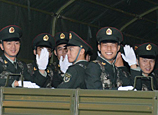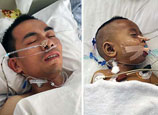
Sun Liguang, the director of Beijing Physical Examination Center in Xicheng district, told the Global Times that the center has conducted annual investigations since 2003, but this is the first time it has released the results to the public.
According to the report, in 2011, only 13.39 percent of students were in absolute good health and 86.59 percent just passed the basic health condition standard. Sun said that in order to be one of the 13.39 percent, several standards must be met, one of which was having good eyesight.
"Take nearsightedness for instance, the number of students with nearsightedness was 83.69 percent in 2010, which increased to 86.15 percent in 2011," he said.
"The heavy burden of studying for the gaokao [college entrance examinations] is the fundamental cause of the decline in students' health. I think that either parents or schools pay more attention to exam grades than student health," said Sun.
In terms of obesity, 5,992 or 9.54 percent of male students and 2,799 female students, or 7.09 percent were facing this problem, the Beijing Times said Tuesday, quoting the report. Blood pressure problems were increasing, but overall, the number of students with this problem is relatively low, fewer than one percent.
Nineteen-year-old Zhao Lin, who wears glasses to correct nearsightedness, said she remembers how stressful it was before she sat the gaokao in 2011, and said she often suffered from illness at the time.
















 Landmark building should respect the public's feeling
Landmark building should respect the public's feeling


![]()
